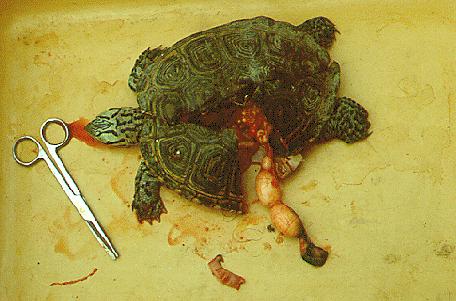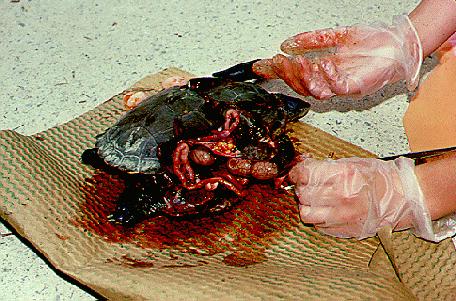Turtles and Tires: The Impact of Roadkills on
Northern Diamondback Terrapin, Malaclemys terrapin terrapin,
Populations on the Cape May Peninsula,
Southern New Jersey, USA
ROGER CONANT WOOD 1, 2 and ROSALIND HERLANDS 1
1Faculty of Science and Mathematics,
2The Wetlands Institute,
e-mail: roger@wetlandsinstitute.org
ABSTRACT: A century ago overhunting of the northern diamondback terrapin, Malaclemys terrapin terrapin, nearly extirpated populations in many parts of its range. More recently, coastal development has led to considerable habitat destruction, especially of traditional nesting sites on barrier beach islands. Along the Atlantic coast of New Jersey, the search for alternative nesting sites on highway embankments has resulted in large numbers of roadkills every nesting season.
We have documented the annual mortality of nesting diamondback terrapins on the Cape May Peninsula of southern New Jersey from 1989 through 1995. A total of 4,020 roadkills were recorded on roads crossing or adjacent to our study area. Potentially viable eggs were recovered from carcasses and 32% were successfully incubated. Since 1991 hatchlings have been headstarted for ten months and 782 (an 81% hatchling survivorship) have been released into the salt marshes of the parents’ origin. Roadkill mortality of adult females remains considerably higher than their rate of replacement, and we have noted a substantial decrease in numbers of mature female terrapins in our study area.
| Roadkill of diamondback terrapin with eggs in oviduct exposed. |

|
 |
Potentially viable eggs are retrieved from a roadkill carcass. |